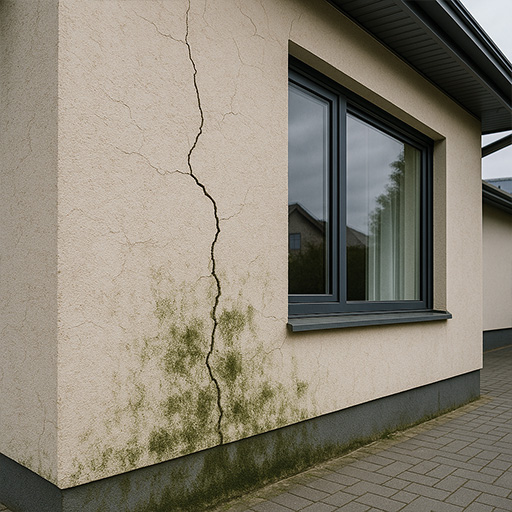Mold growth within homes is a common concern, especially in areas like Massachusetts where humidity levels can fluctuate significantly. While many homeowners are aware that mold can arise from obvious sources like flooding or plumbing leaks, few realize that something as simple as cracks in exterior walls can also be a major contributor to mold proliferation indoors.
The Pathway from Cracks to Mold
Exterior wall cracks, regardless of size, can act as gateways for moisture. These fissures allow water to seep into the structure of your home, creating an ideal environment for mold to grow. Mold spores, which are always present in the air, need only moisture and organic material to start colonizing. Here’s how cracks can lead to mold growth:
- Water Infiltration: Rainwater or even moisture from the air can penetrate through cracks. Over time, accumulated moisture can dampen internal walls and other materials.
- Condensation: Differences in indoor and outdoor temperatures can cause condensation to form around the areas where cracks are present. This provides yet another source of moisture conducive to mold growth.
- Organic Material: Materials like wood framing, drywall, and insulation can trap moisture. These organic materials provide food for mold, allowing colonies to flourish hidden from view until the problem becomes severe.
Health Risks and Structural Damage
The presence of mold in your home is not just an aesthetic issue—it poses serious health risks, especially to those with allergies or respiratory conditions. Mold exposure can cause symptoms ranging from sneezing and coughing to more severe reactions like asthma attacks. Furthermore, prolonged exposure to moisture can weaken the structural integrity of your home, leading to costly repairs down the line.
Preventing and Addressing Mold
Preventing mold starts with keeping your home dry. Regularly inspecting your exterior walls for cracks and addressing these issues promptly can prevent water from entering and accumulating. Here are some steps you can take:
- Regular Inspections: Check your home’s exterior regularly for any signs of damage or wear that could lead to cracks.
- Sealant and Repairs: Use appropriate sealants to fill any cracks or gaps in your walls. For larger cracks or where there is structural damage, professional repairs may be necessary.
- Dehumidifiers: In areas prone to high humidity, using a dehumidifier indoors can help reduce moisture levels, curtailing mold growth.
If you suspect that mold has already taken hold in your home due to cracks or any other issues, it’s crucial to address it immediately to avoid further damage and health risks. Professional mold inspection and removal services can identify the extent of the problem and recommend effective solutions to keep your home safe and healthy.
Need Help with Mold? Call Us!
If you’re concerned about mold in your home, don’t wait for the problem to worsen. Call us today at 978-257-2345 for a thorough mold inspection and expert removal services. Protect your home and health by taking action now!

